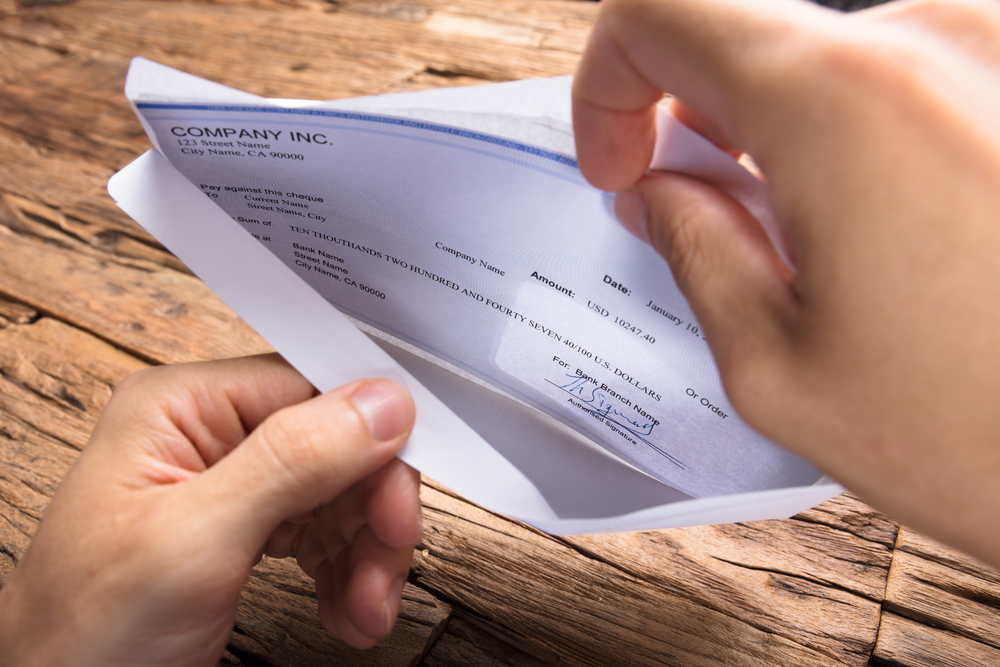Fraudsters Target Checks Sent Through the Mail
More fraudsters are stealing mail with the goal of ripping off businesses like yours. That's the dire warning issued recently by the Financial Crimes Enforcement Network (FinCEN).

ALERT: Check Fraud is on the Rise
More fraudsters are stealing mail with the goal of ripping off businesses like yours.
That’s the dire warning issued recently by the Financial Crimes Enforcement Network (FinCEN).
FinCEN says the number of Suspicious Activity Reports (SARs) that it received from financial institutions to report potential check fraud nearly doubled last year from its filings the year before.
Last year’s spike in filings on potential check fraud came on the heels of a 23 percent spike in 2021.
Check fraud and other fraudulent activities already are the largest source of illicit proceeds in the United States. In many cases, bad actors use check fraud to launder money and finance terrorism.
How Check Fraud Affects Accounts Payable
Check fraud is a big problem for accounts payable. Seventy percent of organizations experienced check fraud in 2020 – up from 62 percent in 2019, per the Association for Financial Professionals (AFP). The average financial loss from check fraud was $34,000 per organization, AFP found.
Now fraudsters are doubling down on the U.S. Postal Service and its mail carriers. In addition to business checks, fraudsters are stealing personal checks, tax refund checks, and unemployment benefits, Social Security payments and other government assistance payments sent through the mail.
Fraudsters are stealing mail from mailboxes, post offices, and even mail carriers. Once they get their filthy hands on the mail, fraudsters will alter, “wash,” or counterfeit the checks to steal funds.
Some bad actors also use the information contained in stolen mail for future fraud schemes.
FinCEN is working with the United States Postal Inspection Service (USPIS) to help financial institutions detect, prevent, and report suspicious activity connected to mail theft-related check fraud.
But the spike in mail theft-related check fraud should be a wake-up call for businesses that still use checks to pay suppliers. Virtual card payments can help stop these fraudsters in their tracks.
The Benefits of Virtual Card Payments
Unlike paper checks, fraudsters cannot intercept virtual cardA single-use or vendor-specific digital payment card used in B2B payments to improve control, visibility, and rebate potential. W transactions, and there is no physical card to steal. A 16-digit virtual cardA single-use or vendor-specific digital payment card used in B2B payments to improve control, visibility, and rebate potential. W number, three-digit security code, and expiration date gets issued for a specific transaction amount and supplier. When single-use virtual cards are used to make a purchase, if a charge is outside of preset limits, the transaction is declined.
After use, the virtual cardA single-use or vendor-specific digital payment card used in B2B payments to improve control, visibility, and rebate potential. W number and accompanying data instantly becomes invalid, so if the number is stolen, the damage potential is extremely limited. In addition, since the card number gets used for its intended purpose and nothing more, concerns over the use of a company credit card for extraneous items are eliminated.
It’s no wonder that studies find virtual cards experience the least fraud of any payment method.
Fraudsters are relentless. They will continue to find new and more sophisticated ways to defraud businesses. But paying suppliers with virtual cards can help businesses mitigate their risk of fraud.
_____________________________________________________________________________________________________
Edenred PayEdenred Pay is the market leader in B2B payments automation., an Edenred Company, is the market leader in invoice-to-pay automation. Our integrated platform connects businesses with suppliers, ERPs, banks, FinTechs, and payment rails to automate, optimize, and monetize the entire invoice-to-pay lifecycle – from invoice receipt through payment reconciliationThe process of matching financial records—such as payments and invoices—to ensure accuracy in accounting and reporting..
Learn how Edenred PayEdenred Pay is the market leader in B2B payments automation. is setting the standard for invoice-to-pay automation at www.edenredpay.com or schedule a meeting with us.

Ready to elevate your B2B payments?
Whether you are automating for the first time, ready to refresh your existing technology, or looking for ways to complete the ‘last mile’ of automation, Edenred Pay can help. Let’s chat about your needs.






